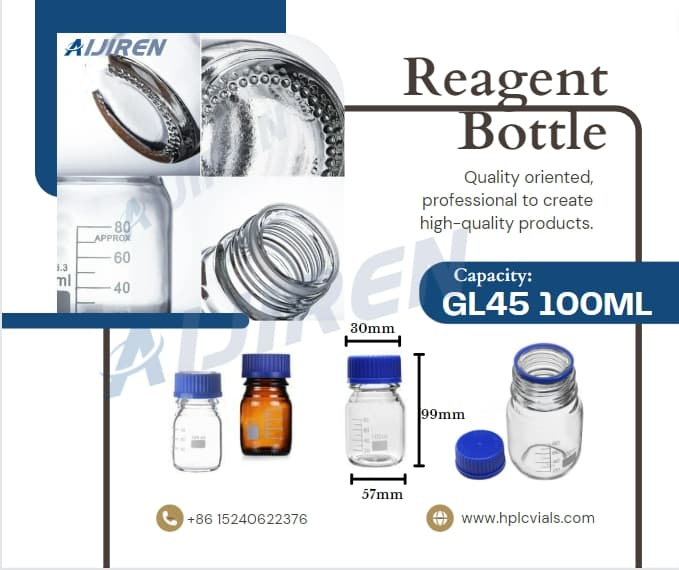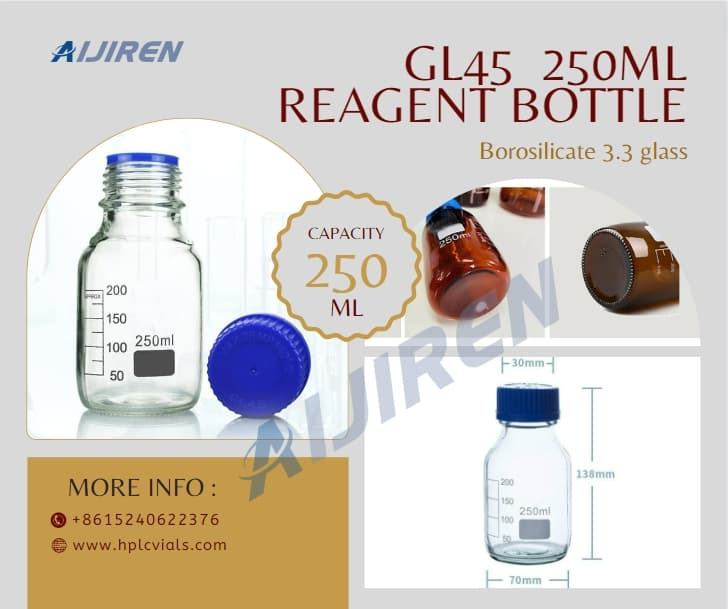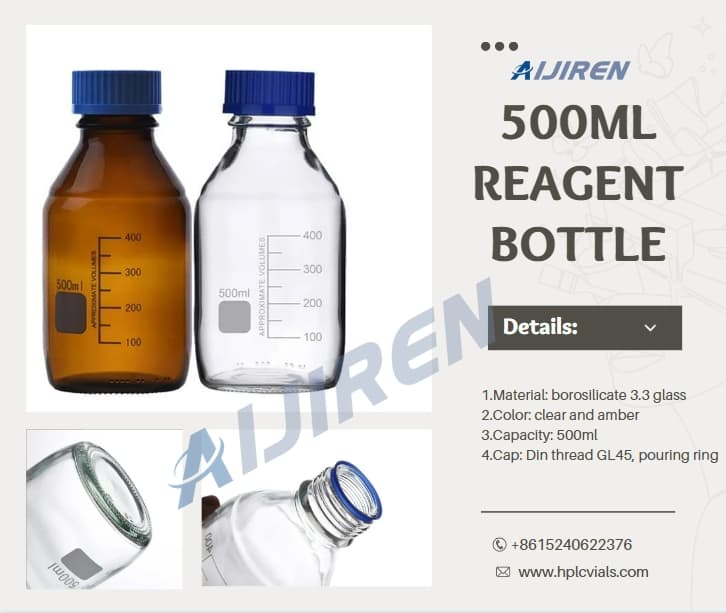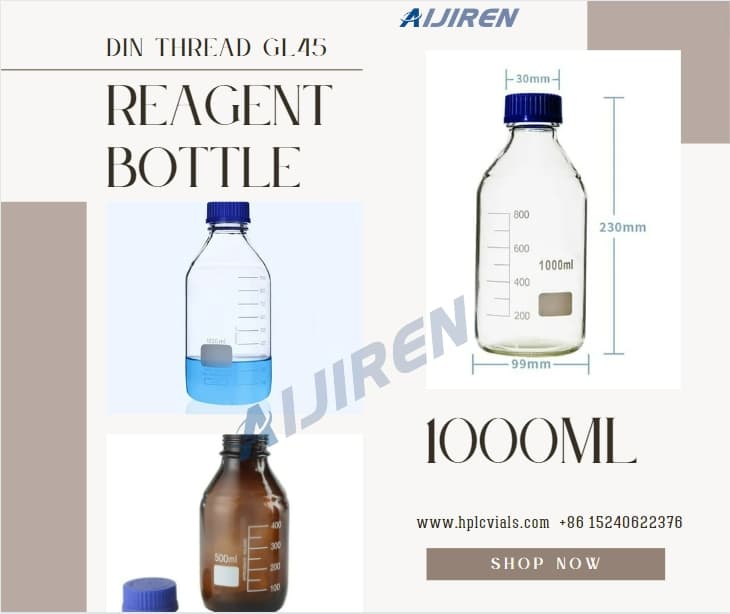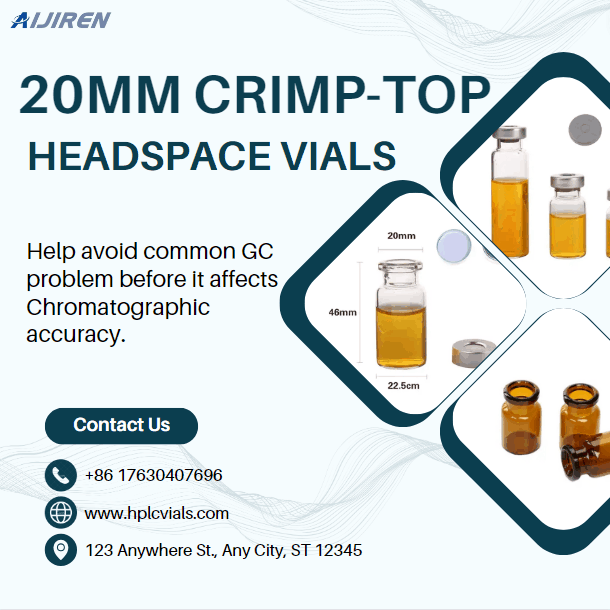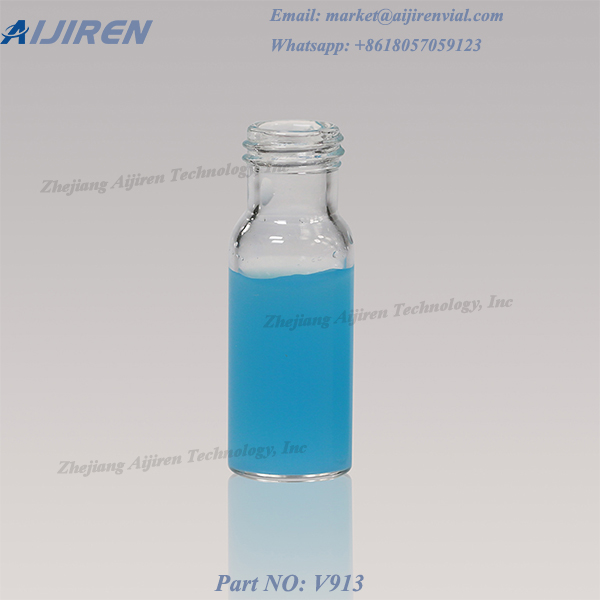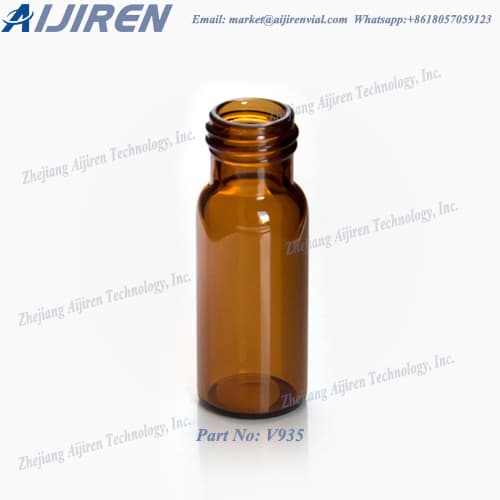The reagent bottle is a fundamental tool used in various scientific, industrial, and medical contexts for the safe storage, handling, and transport of chemicals, samples, and biological cultures. This comprehensive guide aims to provide a detailed overview of the reagent bottle, covering its definition, key features, material options, capacity and graduation markings, cap options, applications and use cases, proper care and maintenance,and choosing the right bottle.
Reagent bottles are designed to withstand the challenges posed by different substances and environments, ensuring the preservation of sample integrity and minimizing the risk of contamination. Understanding the key features and benefits of reagent bottles, including their durability, chemical resistance, secure sealing mechanisms, and ease of handling and storage, is crucial for selecting the appropriate bottle for specific needs.
What is a Reagent Bottle?
A reagent bottle is a type of container designed specifically for storing and dispensing chemical reagents in laboratory settings. These bottles are typically made from materials that offer high chemical resistance, ensuring the integrity and safety of the stored reagents. Reagent bottles come in various sizes, shapes, and designs, allowing for efficient storage and handling of different types and volumes of chemicals.
The primary purpose of a reagent bottle is to provide a secure and protective environment for storing reagents, which are typically substances used in chemical reactions, analysis, or laboratory experiments. These bottles are designed to minimize the risk of contamination, evaporation, and degradation of reagents, thus maintaining their stability and effectiveness over time.
Reagent bottles often feature a narrow neck and a wide base, providing stability and easy handling. The neck may have different types of closures, such as screw caps, snap caps, or stoppers, depending on the specific requirements of the reagent being stored. The closure mechanisms ensure a tight seal to prevent leaks and minimize exposure to air, moisture, and other external factors that may affect the reagent's quality.
Additionally, reagent bottles may have graduation markings on the side, allowing for accurate volume measurements and precise dispensing of reagents. This feature is particularly important for preparing solutions, dilutions, and adding specific quantities of reagents to reactions or experiments.
Reagent bottles are commonly used in chemistry laboratories, research facilities, educational institutions, and industrial settings. They play a crucial role in ensuring proper storage, organization, and safe handling of reagents, contributing to the success and reliability of scientific experiments, analyses, and processes.
|
Reagent Bottle Details 1
|
|
Item name
|
Borosilicate Glass Round Reagent Bottle / Media Bottle
|
|
Material
|
Borosilicate Glass 3.3
|
|
Cap Size
|
GL45
|
|
Cap
|
DIN thread GL45, pouring ring
|
|
OEM/ODM Service
|
Available
|
|
Brand
|
Aijiren
|
|
Capacity
|
100ML, 250ML, 500ML, 1000ML
|
|
Color
|
Clear and amber
|
|
Packing Details
|
10pcs/pack, 8packs/carton, 22kg/carton; Packing in pp-trays with plastic film and carton
|
|
Reagent Bottle Dimension and Details 2
|
|
Capacity
(ML)
|
Bottle Diameter
(mm)
|
Bottle Mouth Inner Diameter
(mm)
|
Bottle Mouth Diameter
(mm)
|
Height
(mm)
|
Cap
|
Material
|
Color
|
|
100
|
56
|
30
|
40
|
100
|
GL45
|
Borosilicate Glass
|
Clear / Amber
|
|
250
|
70
|
30
|
40
|
138
|
|
500
|
87
|
30
|
40
|
178
|
|
1000
|
99
|
30
|
40
|
230
|
Key Features and Benefits
The reagent bottles have very good chemical and thermal resistance (maximum thermal load 135 °C) and constant load for more than 30 minutes should be avoided. Minimal thermal expansion, giving relatively high resistance to temperature changes. Compressive strength is not increased by the plastic coating. Glass Type I according to USP, EP and JP. Round, with graduation and DIN thread. Without pouring ring or screw cap. The coating provides protection against mechanical damage (scratches, etc) and serves as spill and spray protection in case of breakage. It also prevents pieces of glass from shattering.With specially shaped glass rim for improved pouring; no additional pouring ring is needed. Ring-shaped reinforcement on the bottle shoulder makes the filling line of the nominal volume visible.
a. Durability and Chemical Resistance:
One of the key features of reagent bottles, including GL45 reagent bottles, is their durability and chemical resistance. These bottles are typically made from materials such as borosilicate glass, polypropylene (PP), or polycarbonate (PC), which are known for their excellent resistance to a wide range of chemicals and solvents. This durability ensures that reagent bottles can safely store even corrosive or reactive substances without the risk of degradation or contamination.
b. Versatile Capabilities:
Reagent bottles are designed to accommodate various laboratory needs and applications. They often come with versatile cap options that allow for different functionalities. For example, some caps may have built-in dropper inserts for controlled dispensing, while others may have septa or pouring rings for easy pouring or sampling. This versatility enables efficient and precise handling of reagents, making them suitable for diverse laboratory processes and protocols.
c. Secure Sealing Mechanism:
Maintaining a secure seal is crucial for reagent bottles to prevent leaks, evaporation, and contamination. Reagent bottles, including GL45 bottles, typically feature a sealing mechanism that ensures a tight closure. Screw caps with integrated seals or liners are commonly used, providing an airtight and leak-proof seal to protect the contents of the bottle. This secure sealing mechanism contributes to the longevity and reliability of stored reagents, reducing the risk of sample loss or compromised experimental results.
d. Easy Handling and Storage:
Reagent bottles are designed with practicality and ease of use in mind. The narrow neck and wide base of these bottles make them easy to handle and store, providing stability on lab benches or in storage racks. The standardized dimensions of reagent bottles also facilitate compatibility with various laboratory equipment and accessories, such as bottle-top dispensers or filtration systems. Additionally, many reagent bottles feature graduation markings on the side, allowing for precise volume measurements and convenient preparation of solutions or dilutions.
Overall, the key features and benefits of reagent bottles, including GL45 reagent bottles, include their durability, chemical resistance, versatile capabilities, secure sealing mechanism, and easy handling and storage. These features make reagent bottles essential tools in laboratory settings, ensuring the integrity, safety, and efficiency of reagent storage and handling processes.
Material Options for GL45 Reagent Bottles
When it comes to GL45 reagent bottles, there are several material options available, each with its own set of advantages and considerations. Let's explore some of the commonly used materials for GL45 reagent bottles:
a. Borosilicate Glass:
Borosilicate glass is a popular choice for GL45 reagent bottles due to its excellent chemical resistance and thermal stability. It can withstand a wide range of chemicals, including acids, bases, and organic solvents, without degradation or leaching. Borosilicate glass is also highly transparent, allowing for easy visual inspection of the contents. It is known for its durability and resistance to thermal shock, making it suitable for applications that involve temperature variations, such as autoclaving or hot water baths. Furthermore, borosilicate glass is recyclable and environmentally friendly. Borosilicate glass 3.3 is an attractive material that offers inexhaustible design possibilities. Very high chemical resistance, virtually inert behaviour, transparency, high usage temperature, minimal thermal expansion, and the resulting high resistance to thermal shock, are its most significant properties.
|
Borosilicate Glass 3.3 Feature
|
|
SiO2 Content
|
>80%
|
|
Strain Point
|
520℃
|
|
Annealing Point
|
560℃
|
|
Softening Point
|
820℃
|
|
Refractive Index
|
1.47
|
|
Light Transmission(2mm)
|
0.92
|
|
Elastic Modulus
|
67KNmm-2
|
|
Tensile Strength
|
40-120Nmm-2
|
|
Glass Stress Optical Coefficient
|
3.8*10-6mm2/N
|
|
Processing Temperature(104dpas)
|
1220℃
|
|
Linear Coefficient of Expansion(20-300℃)
|
3.3*10-6K-1
|
|
Density(20℃)
|
2.23gcm-1
|
|
Specific Heat
|
0.9jg-1K-1
|
|
Thermal Conductivity
|
1.2Wm-1K-1
|
|
Hydrolytic Resistance(ISO 719)
|
Grade 1
|
|
Acid Resistance(ISO 715)
|
Grade 1
|
|
Alkali Resistance(ISO 695)
|
Grade 2
|
|
Thermal Shock Resistance(ISO 715) Rod 6*30mm
|
300℃
|
b. Polypropylene (PP):
Polypropylene is a plastic material widely used in laboratory settings. GL45 reagent bottles made from polypropylene offer good chemical resistance to a broad range of reagents. Polypropylene bottles are lightweight, shatterproof, and resistant to impact, making them suitable for transport and fieldwork. They are also more affordable compared to glass bottles. However, it's important to note that polypropylene may not be compatible with certain solvents or chemicals, and it may have lower temperature resistance compared to glass.
c. Polycarbonate (PC):
Polycarbonate is another plastic option for GL45 reagent bottles. It provides excellent impact resistance and transparency, similar to glass. Polycarbonate bottles are durable and can withstand high temperatures, making them suitable for autoclaving and repeated sterilization cycles. They offer good chemical resistance to many common laboratory reagents. However, polycarbonate may not be compatible with certain organic solvents, strong acids, or bases. It is also more prone to scratching compared to other materials.
d. Other Materials:
In addition to borosilicate glass, polypropylene, and polycarbonate, there are other materials that can be used for GL45 reagent bottles, depending on specific requirements. Some examples include fluoropolymer resins like PTFE (polytetrafluoroethylene), which offer exceptional resistance to highly corrosive chemicals. However, such specialized materials may come at a higher cost.
It's important to consider the compatibility of the material with the specific reagents and applications being used. Some reagents may require the use of specific materials to prevent chemical interactions or contamination. Additionally, factors such as temperature resistance, transparency, and impact resistance should be considered when selecting the appropriate material for GL45 reagent bottles.
Ultimately, the choice of material for GL45 reagent bottles depends on the specific needs of the laboratory, the nature of the reagents being stored, and the desired properties for handling, durability, and chemical resistance.
Capacity and Graduation Markings
Capacity and graduation markings are important considerations when selecting GL45 reagent bottles for laboratory use. Let's explore these aspects in more detail:
Capacity:
GL45 reagent bottles are available in a wide range of capacities to suit different storage needs. The capacity of a reagent bottle refers to the maximum volume it can hold. These bottles can range in size from a few milliliters to several liters. Common capacities include 100 ml, 250 ml, 500 ml, 1 liter, and 2 liters, among others.
Selecting the appropriate capacity depends on factors such as the volume of the reagent being stored, the frequency of use, and the available storage space. It is important to choose a capacity that allows sufficient headspace to prevent spills or overfilling, as well as to accommodate any necessary mixing or shaking of the contents. Additionally, it's important to consider the volume requirements for specific laboratory processes or experiments to ensure an adequate supply of reagents.
Graduation Markings:
GL45 reagent bottles often feature graduation markings on the side. These markings indicate volume measurements at regular intervals, allowing for accurate and precise dispensing or dilution of reagents. The graduation markings are typically in milliliters (ml) or liters (L), depending on the size of the bottle.
The graduation markings enable users to measure the volume of the reagent without the need for additional measuring devices. This feature saves time and promotes efficiency in the laboratory. It is especially useful when preparing solutions, diluting reagents, or adding specific quantities of reagents to reactions or experiments.
The graduation markings on GL45 reagent bottles are typically permanent and resistant to fading or erasing. They are often printed using enamel or acid-resistant ink to ensure durability and long-term visibility. It is important to note that the accuracy of the graduation markings can vary depending on the manufacturing process and the specific bottle. It is advisable to validate the accuracy of the markings using a calibrated measuring instrument if precise volume measurements are required.
When selecting GL45 reagent bottles, consider the desired capacity based on the volume of reagents being handled and the available storage space. Additionally, ensure that the graduation markings are clear, legible, and appropriate for the level of accuracy needed in your laboratory procedures.
Cap Options for GL45 Reagent Bottles
GL45 reagent bottles typically come with a variety of cap options that provide different functionalities and benefits. The choice of cap option depends on the specific requirements of the reagent being stored and the intended use of the bottle. Some common cap options for GL45 reagent bottles include:
Screw Caps:
Screw caps are the most common type of cap for GL45 reagent bottles. They feature a threaded design that allows for a secure closure by twisting the cap onto the bottle neck. Screw caps provide a tight seal, preventing leaks, evaporation, and contamination of the reagent. They are often made of materials such as polypropylene or high-density polyethylene (HDPE), which offer good chemical resistance. Screw caps can be easily removed and replaced, making them convenient for frequent access to the reagent.
Pouring Rings:
Pouring rings are accessories that can be combined with screw caps to enhance pouring and dispensing capabilities. They consist of a circular ring that fits between the bottle neck and the screw cap. Pouring rings typically have a spout or a groove that allows controlled pouring of the reagent without splashing or dripping. They provide improved accuracy and ease when transferring the contents of the bottle.
Septa Caps:
Septa caps are designed for applications that require puncturing the cap for sampling or introducing a needle for injection. They feature a central hole covered with a septum, which is a self-sealing rubber or silicone disk. The septa allow for a syringe or needle to penetrate the cap without compromising the integrity of the seal. Septa caps are commonly used in analytical laboratories for gas or liquid chromatography applications.
Flip-Top Caps:
Flip-top caps, also known as snap caps or hinged caps, offer quick and convenient access to the reagent. They have a hinged lid that can be easily flipped open and securely closed. Flip-top caps are often used when frequent and rapid dispensing or sampling of the reagent is required, as they eliminate the need for unscrewing and re-screwing the cap.
Child-Resistant Caps:
Child-resistant caps are designed with safety features to prevent accidental opening by children. They often require a specific combination of simultaneous actions, such as pushing and twisting, to unlock and open the cap. Child-resistant caps are commonly used for reagents that are hazardous or potentially harmful if ingested.
It's essential to consider the specific requirements of the reagent, such as the need for airtight sealing, controlled pouring, puncturing, or child safety, when selecting the appropriate cap option for GL45 reagent bottles.
Applications and Use Cases
Reagent bottles have diverse applications and use cases across various fields, including chemical storage and handling, media preparation and storage, sample storage and transport, biological cultures and cell culture, pharmaceutical and industrial applications, and chromatography. Their versatile design, chemical resistance, and secure sealing make them indispensable tools in laboratories, research facilities, pharmaceutical companies, and industrial settings. Let's explore the applications and use cases of reagent bottles in more detail:
a. Chemical Storage and Handling:
Reagent bottles are widely used for storing and handling a wide range of chemicals in laboratory and industrial settings. Their characteristics, such as chemical resistance, airtight sealing, and durability, make them ideal for this purpose. Some specific applications include:
1. Reagent Storage: Reagent bottles are commonly employed to store chemicals used in laboratory experiments, research, and analysis. These can include acids, bases, solvents, salts, reagents, and other chemical compounds. The bottles provide a secure and organized solution for chemical storage, preventing contamination and maintaining the integrity and stability of the stored substances.
2. Hazardous Chemicals: Reagent bottles are especially useful for storing hazardous chemicals, such as corrosive, toxic, or flammable substances. They are designed to withstand the specific properties and risks associated with these chemicals, ensuring the safety of laboratory personnel and the environment.
3. Chemical Dispensing: Reagent bottles often feature different types of closures, such as screw caps, dropper caps, or dispensing pumps, allowing for controlled and precise dispensing of chemicals during experiments or manufacturing processes.
4. Chemical Transport: Reagent bottles are also used for transporting chemicals between different locations within a laboratory or from one facility to another. Their leak-proof design and secure closures prevent spills, leaks, and cross-contamination during transit.
b. Media Preparation and Storage:
Reagent bottles play a crucial role in the preparation, storage, and handling of various types of media, such as growth media, culture media, and nutrient solutions. These bottles are commonly used in:
1. Microbiology and Cell Culture: Reagent bottles are used to store and dispense various types of liquid media required for microbial culture and cell culture applications. These media provide the necessary nutrients for the growth and maintenance of microorganisms or cells. The bottles' airtight sealing and chemical compatibility ensure the integrity and sterility of the media.
2. Agar Plates and Petri Dishes: Reagent bottles are used to pour and store melted agar, which is then solidified to form agar plates or Petri dishes. These plates are widely used in microbiology laboratories for isolating and cultivating microorganisms.
3. Reagent Preparation: Reagent bottles are used for preparing and storing reagents required for media preparation, such as pH buffers, antimicrobial agents, or supplements. These reagents are added to the media to create specific growth conditions or to enhance the selectivity or recovery of target microorganisms.
c. Sample Storage and Transport:
Reagent bottles are commonly used as containers for the storage and transport of various types of samples in scientific and medical laboratories. They provide a secure and controlled environment for preserving the integrity of the samples. Some applications include:
1. Biological Samples: Reagent bottles are used to store biological samples, such as blood, urine, serum, plasma, or tissue specimens. They are designed to maintain the stability and viability of the samples, protecting them from contamination, degradation, or temperature fluctuations.
2. Environmental Samples: Reagent bottles are utilized for storing environmental samples, such as water, soil, air, or food samples. These samples may contain pollutants, microorganisms, or other analytes of interest. The bottles' chemical resistance and leak-proof design prevent sample contamination or loss during storage or transport.
3. Sample Preservation: Reagent bottles are used for preserving samples by adding preservatives or stabilizers. These bottles ensure the effective preservation of samples for subsequent analysis or testing.
4. Sample Transport: Reagent bottles are commonly used for transporting samples from the collection site to the laboratory. They provide a secure and leak-proof container, minimizing the risk of sample degradation or contamination during transit.
d. Biological Cultures and Cell Culture:
Reagent bottles are essential in biological research and cell culture applications, providing a controlled environment for the growth and maintenance of cells, tissues, or microorganisms. Some use cases include:
1. Cell Culture: Reagent bottles are used for preparing and storing cell culture media, growth factors, supplements, and other reagents required for cell culture experiments. The bottles' airtight sealing and chemical compatibility ensure the sterility and stability of the culture environment.
2. Tissue Culture: Reagent bottles are employed for storing and handling tissue culture media, including nutrient solutions and buffers. These media provide the necessary nutrients and conditions for the growth and maintenance of tissue cultures.
3. Microbial Culture: Reagent bottles are used for preparing and storing culture media for microbial growth. These media may contain specific nutrients or selective agents to promote the growth of target microorganisms or inhibit the growth of unwanted contaminants.
4. Incubation and Storage: Reagent bottles are suitable for incubating and storing biological cultures, maintaining the desired temperature, humidity, andconditions. The bottles' design allows for easy monitoring of cultures and convenient access for sampling or subculturing.
e. Pharmaceutical and Industrial Applications:
Reagent bottles find extensive use in pharmaceutical and industrial settings, supporting various processes and applications. Some notable use cases include:
1. Drug Formulation: Reagent bottles are employed for storing and dispensing active pharmaceutical ingredients (APIs), excipients, solvents, and other chemicals used in drug formulation. These bottles ensure the stability, purity, and integrity of the components during the formulation process.
2. Quality Control and Analysis: Reagent bottles are used in pharmaceutical quality control laboratories for storing standards, reagents, and reference materials required for analytical testing. These bottles provide a controlled environment for maintaining the integrity and accuracy of the analytical standards and reagents.
3. Industrial Chemicals: Reagent bottles are utilized in industrial settings for storing and transporting chemicals used in manufacturing processes. These chemicals can include solvents, catalysts, acids, bases, or specialty chemicals. The bottles' chemical resistance and durability ensure the safe handling and storage of these chemicals.
4. Industrial Samples: Reagent bottles are used to store and transport samples collected from industrial processes, such as wastewater or air samples. These samples may require analysis for environmental monitoring, quality control, or regulatory compliance purposes. Reagent bottles provide a secure container for preserving the integrity of the samples during storage and transport.
f. Chromatography:
Reagent bottles also have important applications in chromatography, a widely used technique in analytical chemistry for separating and analyzing components of a mixture. Chromatography typically involves a stationary phase (such as a solid matrix or a liquid coating) and a mobile phase (such as a solvent or gas). Reagent bottles play a crucial role in storing, preparing, and handling the various components involved in chromatographic analysis. Some key applications include:
1. Solvent Management: Reagent bottles are utilized for storing and dispensing the solvents used as the mobile phase in chromatographic analysis. These solvents can range from polar to non-polar liquids, depending on the separation requirements of the analytes of interest. Reagent bottles provide a secure and leak-proof container for solvents, protecting them from contamination and evaporation. They also facilitate easy and controlled dispensing of the solvents into the chromatography system.
2. Reagent Storage and Handling: Chromatographic analysis often involves the use of specific reagents for sample preparation, derivatization, or detection purposes. Reagent bottles serve as storage containers for these chemicals, ensuring their stability and preventing degradation or contamination. The bottles are made of chemically resistant materials, such as glass or plastic, to safeguard the reagents. They may feature specialized closures, such as screw caps with liners or septa, to maintain a tight seal and prevent evaporation or leakage.
3. Sample Preparation and Storage: Before analysis, samples may require preparation steps such as extraction, filtration, or concentration. Reagent bottles are used to hold and store the prepared samples, maintaining their integrity until they are ready for injection into the chromatography system. The bottles may be equipped with caps or closures that allow for easy and controlled sample dispensing, minimizing the risk of contamination or sample loss.
4. Column Packing: Chromatographic separation is often performed using columns packed with a stationary phase. Reagent bottles are employed to hold the stationary phase materials, which can include silica gel, reversed-phase media, ion-exchange resins, or specialized chiral stationary phases. The bottles provide a convenient vessel for transferring and packing the stationary phase into the chromatography column. This ensures uniform packing and optimal separation efficiency during the chromatographic analysis.
5. Calibration and Standard Preparation: Accurate quantification of analytes in chromatography often requires the use of reference standards and calibration solutions. Reagent bottles are used to store these standards, ensuring their stability and preventing contamination. The bottles' transparency enables easy visual inspection of the standards, allowing for identification and verification. Calibration solutions can be prepared and stored in reagent bottles, facilitating the calibration of the chromatography system and ensuring accurate quantification of analytes.
6. Waste Collection: Chromatographic analysis generates waste materials, including used solvents, buffers, and other chemicals. Reagent bottles are employed as collection containers for these waste materials, promoting proper waste management and disposal. The bottles' chemical resistance and leak-proof design prevent the waste from contaminating the lab environment and facilitate safe disposal procedures.
Proper Care and Maintenance
To ensure the longevity and proper functioning of GL45 reagent bottles, it is important to follow appropriate care and maintenance practices. Here are some guidelines for cleaning, sterilization, and storage:
a. Cleaning and Sterilization:
Rinse with Dilute Acid: Before initial use, rinse the GL45 reagent bottle with a dilute acid solution (e.g., 10% hydrochloric acid) to remove any residual contaminants or manufacturing residues. Rinse thoroughly with distilled water afterward.
Regular Cleaning: After each use, clean the bottle thoroughly to remove any residue or contamination. Rinse the bottle with an appropriate solvent or detergent, followed by rinsing with distilled water. Use a bottle brush or a suitable cleaning tool to clean the interior surfaces, including the neck and cap threads. Avoid using abrasive materials that may scratch the glass or degrade plastic bottles.
Sterilization: GL45 reagent bottles can be sterilized using various methods, including autoclaving, dry heat sterilization, or gamma irradiation. Ensure that the chosen sterilization method is compatible with the material of the bottle (e.g., glass or plastic). Follow the sterilization guidelines provided by the manufacturer to prevent damage or deformation of the bottle.
Drying: After cleaning and sterilization, allow the GL45 reagent bottle to dry completely before use or storage. Place the bottle in an inverted position on a clean, lint-free surface to facilitate drying and to prevent any moisture accumulation.
b. Storage Guidelines:
Compatibility: Store reagents or samples in GL45 reagent bottles that are compatible with the specific chemical or biological material being stored. Verify the compatibility of the bottle material with the stored reagent to prevent any adverse reactions or chemical interactions. Consult chemical compatibility charts or the manufacturer's recommendations when in doubt.
Labeling: Clearly label each GL45 reagent bottle with the contents, date of preparation, and any other necessary information. Use solvent-resistant or autoclavable labels to maintain legibility and prevent smudging or fading.
Cap Tightening: Ensure that the cap is tightened securely to maintain an airtight seal and prevent leakage or evaporation of the stored reagent. However, avoid over-tightening, as it may cause damage to the cap or bottle threads.
Storage Conditions: Store GL45 reagent bottles in a clean, dry, and well-ventilated area away from direct sunlight, heat sources, or extreme temperature fluctuations. Follow any specific storage recommendations provided by the reagent or sample manufacturer.
Protection: Use appropriate protective measures to prevent breakage or damage to the bottles during storage. This may include using racks or storage boxes that provide stability and minimize the risk of accidental tipping or falling.
Regular Inspection: Periodically inspect the GL45 reagent bottles for any signs of damage, such as cracks, chips, or wear. Replace any damaged bottles to maintain the integrity of the stored materials.
By following these care and maintenance guidelines, you can ensure the longevity and reliability of GL45 reagent bottles, promoting safe and effective storage and handling of reagents and samples in the laboratory.
Choosing the Right GL45 Reagent Bottle
When choosing the right GL45 reagent bottle for your laboratory needs, several factors should be taken into consideration:
a. Consideration Factors:
Regular Cleaning: After each use, thoroughly clean the bottle using an appropriate solvent or detergent. Rinse with distilled water to remove any residue or contamination. Use a bottle brush or suitable cleaning tool to clean the interior surfaces, including the neck and cap threads. Avoid using abrasive materials that may scratch the glass or degrade plastic bottles.
Sterilization: Depending on the application, GL45 reagent bottles may require sterilization. Common sterilization methods include autoclaving, dry heat sterilization, or gamma irradiation. Follow the sterilization guidelines provided by the manufacturer to prevent damage or deformation of the bottle.
Drying: Ensure the GL45 reagent bottle is completely dry before use or storage. Inverted drying is often recommended, where the bottle is placed upside down on a clean, lint-free surface to facilitate drying and prevent moisture accumulation.
Inspection: Periodically inspect the GL45 reagent bottle for any signs of damage, such as cracks, chips, or wear. If any damage is observed, replace the bottle to maintain the integrity of stored materials.
Cap Maintenance: Check the condition of the caps regularly. Ensure they are tight-fitting and provide an airtight seal. Replace damaged or worn-out caps to prevent leakage or evaporation.
Chemical Compatibility: Pay attention to the compatibility of the stored reagents or samples with the bottle material. Ensure the bottle material is suitable to withstand the chemical properties of the substances being stored.
Storage Environment: Store GL45 reagent bottles in a clean, dry, and well-ventilated area away from direct sunlight, heat sources, or extreme temperature fluctuations. Follow any specific storage recommendations provided by the reagent or sample manufacturer.
b. Supplier and Quality Assurance:
Reputable Supplier: Purchase GL45 reagent bottles from reputable suppliers who specialize in laboratory supplies. This helps ensure that you receive high-quality products that meet industry standards.
Quality Assurance: Verify that the supplier has quality assurance processes in place, such as ISO certification or compliance with relevant standards. This ensures that the bottles are manufactured and tested to meet quality requirements.
Product Specifications: Request detailed product specifications from the supplier, including information on material composition, chemical resistance, and any certifications or compliance with regulations.
c. Cost Considerations:
Price Comparison: Compare prices from different suppliers to ensure that you are getting competitive pricing for the desired quality. However, prioritize quality and suitability for your application over solely focusing on the lowest cost option.
Long-Term Cost: Consider the long-term costs associated with the bottles, such as replacement frequency and any additional accessories required (e.g., pouring rings, caps). A more durable and reliable bottle may offer better value in the long run, despite a higher initial cost.
Bulk Ordering: If your laboratory has high usage, consider bulk ordering to potentially obtain volume discounts. However, ensure that the ordered quantity aligns with your storage capabilities and expiration dates.
By carefully considering these factors, working with reputable suppliers, and balancing cost considerations, you can choose the right GL45 reagent bottle that meets your laboratory's specific needs and ensures the safe and efficient storage of reagents and samples.
How often should GL45 reagent bottles be inspected for damage?
GL45 reagent bottles should be inspected for damage on a regular basis. The frequency of inspections may vary depending on factors such as the frequency of use, the nature of the stored substances, and the overall handling and storage conditions. However, a general guideline is to inspect GL45 reagent bottles for damage at least before each use or on a monthly basis.
During the inspection, carefully examine the bottle for any visible signs of damage, such as cracks, chips, scratches, or wear. Pay particular attention to the bottle's neck, body, and base, as these areas are more prone to damage.
It is also important to inspect the caps or closures of the bottles to ensure they are in good condition and provide a secure and airtight seal. Look for any signs of wear, deformation, or damage to the cap threads or seals.
If any damage is detected during the inspection, it is crucial to replace the damaged bottle immediately. Using a damaged bottle can compromise the integrity of the stored substances and increase the risk of leaks, contamination, or other safety hazards.
Aside from regular inspections, it is also recommended to visually inspect GL45 reagent bottles before and after each use for any noticeable changes or signs of damage. This proactive approach helps to identify and address any potential issues promptly.
Remember, the primary goal of inspecting GL45 reagent bottles is to ensure the safety and reliability of the stored substances. By conducting regular inspections, laboratories can maintain the quality and integrity of their reagents and samples, promoting accurate and reliable experimental results.
Conclusion
In conclusion, the reagent bottle is a crucial component in scientific, industrial, and medical settings for the safe storage, handling, and transport of chemicals and samples. Its durability, chemical resistance, secure sealing mechanisms, and ease of use make it indispensable in various applications. By understanding the material options, capacity markings, cap choices, and proper care and maintenance, professionals can optimize the use of reagent bottles. Additionally, considering factors such as application requirements, supplier reliability, and cost helps in selecting the appropriate bottle. The comprehensive knowledge provided in this guide empowers users to make informed decisions, ensuring the integrity and efficiency of their laboratory processes.

 English
English
 Chinese
Chinese
